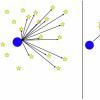More information on methylglyoxal, and, especially, glyoxalase I, an enzyme that detoxifies methylglyoxal.
Talk given by Paul Thornalley at the Fifth SENS conference. So yes, Aubrey & SENSF know about it 
http://www.youtube.com/watch?v=lnGK0auyj1Y
Thanks for pointing this out. It's good that Aubrey knows about this now, but this is not the way he portrayed methylglyoxal and alagebrium in his book, Ending Aging:
"Some critics hold that alagebrium is not actually an age breaker after all, but an age inhibitor...there is a certain superficial plausibility to this view, but these arguments can't stand up against the irrefutable fact that, in animal studies, alagebrium doesn't just slow down the development of complications in diabetic rodents or prevent the age related tissue stiffening of the cardiovascular system in normally aging dogs and monkeys, it reverses them. A drug that only inhibited the cross-linking of tissues would be able to reduce the rate at which new crosslinks form, and thereby slow the degeneration of crosslinked tissues -- but it would not have the restorative effects that have been elicited by alagebrium."
Aubrey De Grey was wrong here on at least several levels. First off, the effects of Methylglyoxal are detrimental to health without creating cross links -- like my example above that you could restore the age-induced mitochondria energy loss by blunting MG with alagebrium. These effects would be more pronounced in a dog that was only 15 years old than in a 60 year old human because of the time for age cross link accumulation in in the much-older individuals. So removing MG could account for ALL of the effects of alagebrium that would be inhibited in old animals with short life spans.
2. He assumes that the time to intervene in the process is after the age-crosslinks have been created (where we don't have a solution) rather than up-stream where they can be controlled. Tests on a 40-year-old monkey's show that it is still early enough to intervene and restore cardiovascular function, but in the 70-year-old human it is too late.
3. He doesn't mention the difference between crosslink and non-crosslink ages, focusing solely on the crosslink type. However, alagebrium has been shown in rats to increase excretion of N(6)-Carboxymethyllysine (CML) in the urine by 138%. These non-crosslinks occur with 10 times the frequency of glucosepane (which De Grey decided is the real object for targeting.) While CML doesn't crosslink, it causes proteins like elastin to be the wrong shape. If you look at increased rates of glucosespane in diabetics and 90-year-old humans, you see that they are created with exponentially increased frequency as compared to younger people. It may be that glucosepane production is a side-effect of long term MG exposure, and again we should intervene before the body start producing a lot of it.
Methylglyoxal causes high blood pressure, glucose intolerance, nitrous oxide and endothethial dyfunction, vascular smooth cell muscle growth, misshapen LDL, mitochondrial disfunction and more.
CML (and CEL) is implicated in fatty liver, COPD, Asthma, renal disease, heart enlargement, loss of elasticity in organs, Alzheimer's and cognitive decline and more.
Should we be waiting for a drug that breaks glucosepane when we have the solution for many of problems of aging? Why let yourself go through any of the effect listed above for 40 or so years before you try to reverse them?
Edited by poolboy, 16 April 2012 - 05:22 PM.
















































